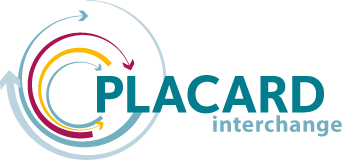Our poster on the value of consistent terminology was presented at the European Climate Change Adaptation conference in Glasgow, 2017.
The problem
Shared terminology is critical to improving the effectiveness and uptake of climate communication. However, the huge amount of often fragmented and unstructured information available leads to limited learning, and partially explains the large gap between adaptation research and action. Our particular focus is on understanding and harmonisation between the terms and language used in climate adaptation (CCA) and disaster risk reduction (DRR).
Results
We analysed text from country-based reports for Finland, extracting instances of a range of key terms. This analysis resulted in visualisations of the national-level landscape of adaptation and disaster risk.
While the DRR and CCA communities are relatively well-integrated in Finland, the visualisations show potential differences in understanding of terms that are common to both communities:
- DRR – ‘protection’ refers mainly to civil protection measures and mechanisms, such as the emergency services, or short-term flood forecast, early warning systems, damage and insurance mechanisms (National Risk Strategy and 2nd Hyogo Framework for Action Plan)
- CCA – ‘protection’ refers to laws and policies on species and ecosystem protection, or longer-term risk reduction, such as flood and coastal protection (6th National Communication on Climate Change)
Whilst such differences are often valid, and related to differing objectives, this also reflects long-standing differences in the way these communities consider vulnerability. Identifying these differences and how they impact decision-making processes in each community will contribute to greater mutual understanding.
Our aim is to highlight overlapping areas that would benefit from greater collaboration between the CCA and DRR communities, and entry points for intervention and dialogue that can contribute to more coordinated and effective action.
Outcomes
Various initiatives in the CCA and DRR sectors use taxonomies such as the Climate Tagger thesaurus, however the current version is stronger in CCA terms than DRR. We aim to contribute DRR terms to Climate Tagger to improve automated tagging systems in various knowledge products and learning.
The results from analysis of the ontology and visualisations will translate useful information into usable knowledge for policy and practice in both communities, including climate information providers.
Figure: Visualising the use of terminology at the national level in Finland



